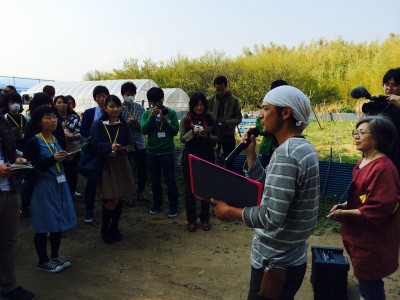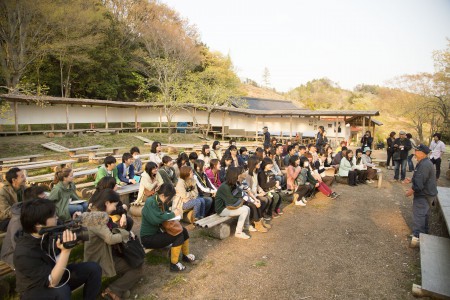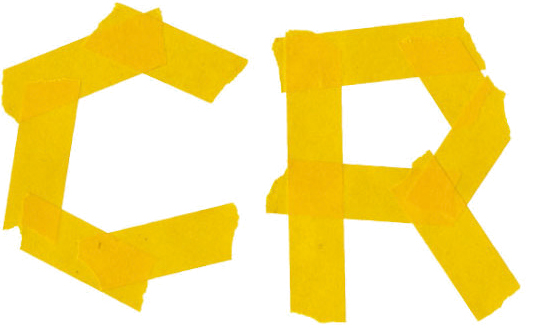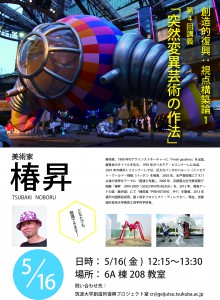For the Creative Reconstruction: Vision Formulation 1, 5th Session, Noi Sawaragi, the art critic, was invited to give a talk titled, “The Art of the Japanese Archipelago and Its Foundation”.
When thinking about art in terms of the “Japanese archipelago”, unlike Western Europe from where “art”, as we know it, had generated, Japan has been, from the olden days, victim of many natural disasters including earthquakes, and therefore has always lived with unstable grounds. It was very interesting to hear that pictures depicting past major earthquakes are important in the study of Japanese art. It led us to the thinking that not only is it necessary to consider the Great East Japan Earthquake, but also to study how the Japanese people had coped with past earthquakes. (Akagi)
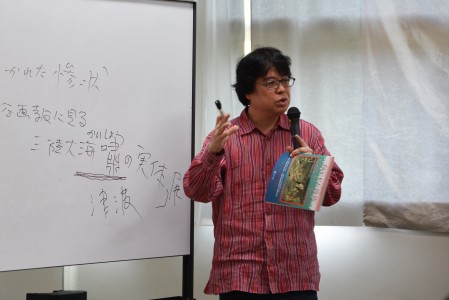
Category Archives: Lessons
[Preview] Creative Reconstruction: Vision Formulation 1, 5th Session
For the Creative Reconstruction: Vision Formulation 1, 5th Session, Noi Sawaragi, the art critic, will be invited to give a talk titled, “The Art of the Japanese Archipelago and Its Foundation”. Please come, as anyone is welcome to attend.
Venue: Tsukuba University, Bldg.6A Rm.208
Date & Time: May 23, Friday, 12:15〜13:30
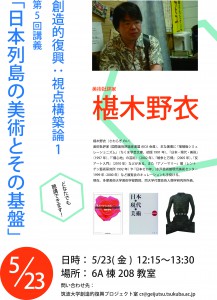
Creative Reconstruction: Vision Formulation 1, 4th Session
For the Creative Reconstruction: Vision Formulation 1, 4th Session, the artist, Noboru Tsubaki was invited to give a talk titled, “The Decorum of Mutation Art”.
His talk began with the subject of philosophy and extended to his own works from multiple angles. Among them, most noteworthy was the story about his art project in Shodo-shima (Island), in which he mentioned that the key to a successful project is how many people you can get to participate in the project. This is something very important and relates to the future of our CR activities, as well. (Akagi)
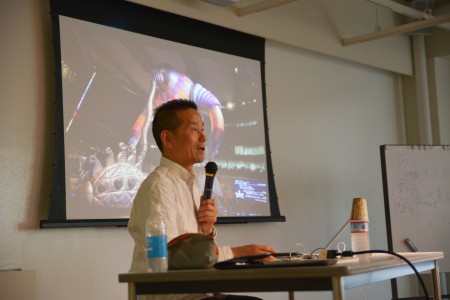
Kotonoha Team, Minami-Soma Tour
Because of the code sharing with the College of Comparative Culture that started this year, the “Kotonoha Team” has been created. Applying the properties of its specialty, activities focused on “words” are being planned. As a start, we decided to visit the site and went on a tour of Minami-Soma City in Fukushima on May 10 and 11. (14 students, 4 instructors) The first day, we visited the Koike Naganuma Nishi Emergency Temporary Housing, where residents of the Odaka district, who suffered damages from both the tsunami and radiation, live.
Minoru Matsumoto, Chief of the Odaka District Regional Development Division spoke to us about the damages and the reconstruction plans, and Shinichiro Raku, President of the Community Association, about the life at the temporary housing and its problems with reference to actual examples. Since the damages in the Odaka district are not the same across the board, we listened to stories by the evacuees from the eastern region, western region and central region. In the evening, we visited the home of Mikako Takahashi, President of Hokuyosha Cleaning, Japan, and a supporter of “Tsunagaro Minami-Soma”. She showed us some valuable video footage and told us about how she was among the first to reopen her cleaning business after the disastrous earthquake. The second day, we toured the Odaka district with Matsumoto-san, guided by Fumitoshi Kanazawa, Chief Curator of the Fukushima Museum. This is an area preparing for the lifting of the evacuation directive, and although a return in 2 years has been decided, the conditions are still as can be seen in the photograph. It was heart wrenching for us, too, to see the sad looks on Raku-san, Tamagawa-san and Inamura-san, who had come with us from the temporary housing. We also visited Rikuzenhama-kaido, Soma Odaka Shrine, Kashima Fukko Shopping Center and Michinoku Kashima Baseball Stadium. It was a two-day visit in which we felt we had learned things that we could never have known just by reading about them. (Takahashi)
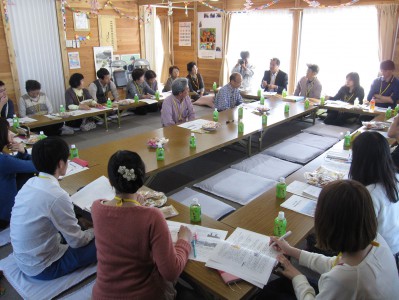
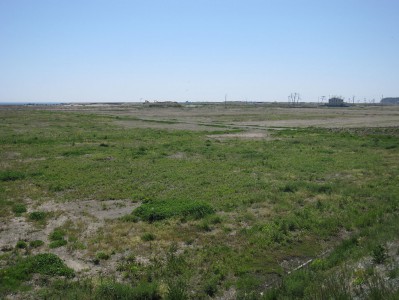
Okuma-machi Team, Aizu Research
On May 10 and 11, we visited the North Emergency Temporary Housing of Johoku Elementary School in Aizu-Wakamatsu-city, where people from Okuma-cho have evacuated and are currently living. This activity is now entering its 3rd year. Together with the residents of the temporary housing, we made shiratama-dango and discussed plans for this year’s Summer Festival. It turned out to be a productive research carried out in a lively atmosphere.
The next day, we visited the Fukushima Museum and spoke to Ms. Shoji and Mr. Kamata, who had evacuated from Okuma-cho and are working in Aizu and Sukagawa. Curators of the museum, Mr. Kawanobe and Ms. Kobayashi, who are also supporters of CR, spoke about the many activities in Fukushima as well. It was a very informative and significant two days, as we were able to hear directly from many people.
(Akagi)
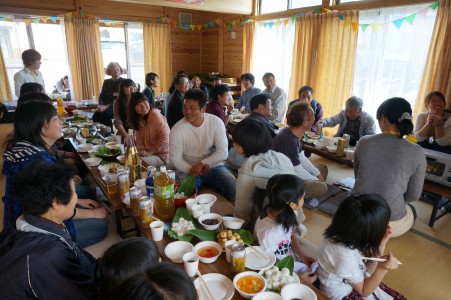
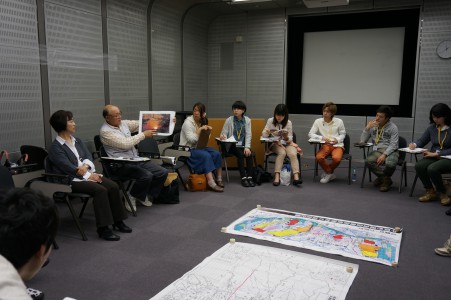
Preview: Creative Reconstruction: Vision Formulation 1, 4th Session
Kamado (Cooking stove) Project Team “The Spring Hojo Market”.
On May 6, 2 years ago, a tornado swept through Hojo in Tsukuba-city. The Spring Hojo Market was held on the 6th and the Kamado Project Team carried out a workshop. Based on a map created by the “Project to strengthen the ties of the local shopping area”, which was organized by the Tsukuba City Society of Commerce & Industry and the Japan Shopping District Support Center and conducted between January and March, the team asked people, who had come to the market and taken part in the workshop, to draw their vision of Hojo 10 Years from now. (Hara)
We would like to thank everyone who came to the workshop, ”The Future of Hojo Shopping Center: Let’s Draw My Town, Our Town!” Thanks to all your efforts, a wonderful map has been created! Although there was a delay due to some problems, we are very glad we were able to make the ohagi (Bean cake) and serve them to the local people, too. A mobile kamado was introduced for the first time. Since it was cold, the kamado also acted as a heater. (LOL) This time, we boiled water for the tea, but next time, we would like everyone to try the rice, which will be cooked on the kamado BIKE!! We are very glad that we were able to connect with many people through the Hojo Market. Thank you very much. (Tanji, 3rd Year at School of Art & Design)
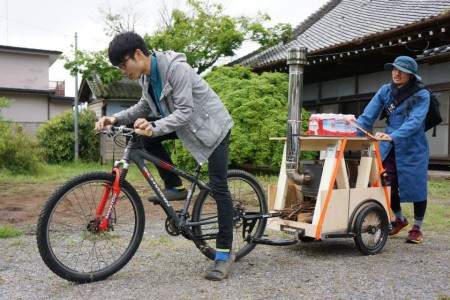
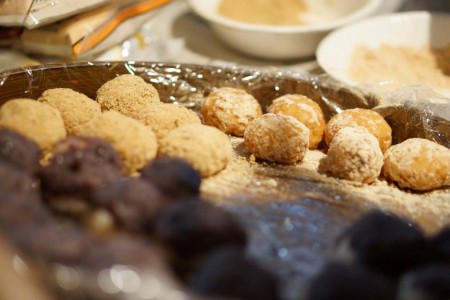
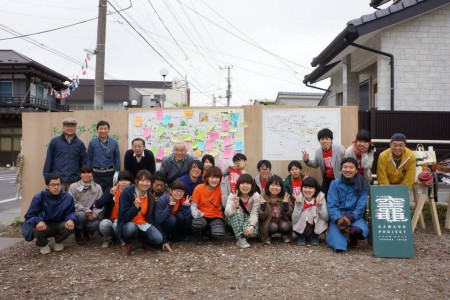
Creative Reconstruction: Vision Formulation 1, 3rd Session
At the 3rd session of Vision Formulation, Mr. Kikuo Morimoto, Representative of the Institute for Khmer Traditional Textiles (IKTT), came and spoke about “Traditional textiles and the reconstruction of life”.
He spoke about how he restored the traditional Cambodian silk textile, Khmer textile, and the story of how the current village was developed. ”I wanted to make something of real quality, and I believed that if something of genuine quality can be sold, I would be able to employ the local people.” It was from such thoughts that prompted him to start by cultivating the wilderness and planting mulberry trees. His story was very inspiring and informative. It made us realize that not only is it essential to rediscover local traditions and resources, but also to follow tradition and take it to the next stage for further development. (Akagi)
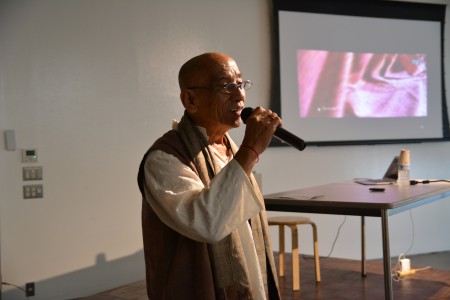
Creative Reconstruction: Vision Formulation 1, 3rd Session
At the 3rd session of Vision Formulation, Mr. Kikuo Morimoto, Representative of the Institute for Khmer Traditional Textiles (IKTT), came and spoke about “Traditional textiles and the reconstruction of life”.
He spoke about how he restored the traditional Cambodian silk textile, Khmer textile, and the story of how the current village was developed. ”I wanted to make something of real quality, and I believed that if something of genuine quality can be sold, I would be able to employ the local people.” It was from such thoughts that prompted him to start by cultivating the wilderness and planting mulberry trees. His story was very inspiring and informative. It made us realize that not only is it essential to rediscover local traditions and resources, but also to follow tradition and take it to the next stage for further development. (Akagi)
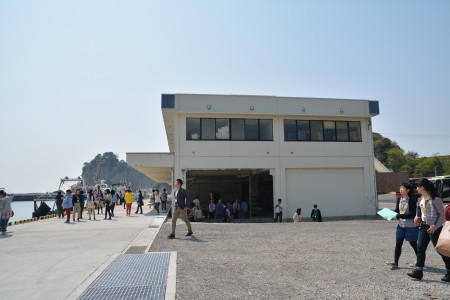
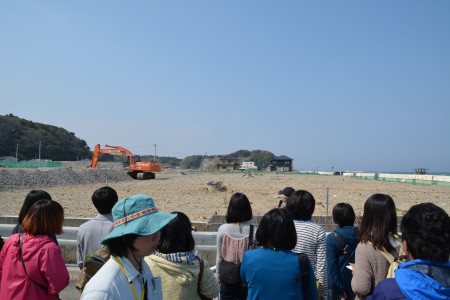
Iwaki Study Tour – 1st Day
On April 25-26, we went on an over-night Iwaki study tour. This year, 58 students took part in the tour. The tour was organized so that the students could actually see with their own eyes, 3 years after the disastrous earthquake, the current state of Iwaki-city in Fukushima, which was affected by both the earthquake and the nuclear power station accident. We also visited people who had appeared in the movie “Iwaki Note” produced by FUKUSHIMA VOICE, and listened to their invaluable stories.
On the first day, we visited Yu-Yu Farm, where they are growing a fruit called “feijoa”, and asked about the farming situation in Fukushima and how they are affected by the harmful rumors. Then, we went to the Snake Museum of Contemporary Art where the Iwaki Flourishing Cherry Blossoms Project is being held, and spoke to the representative director. After we had checked into our hotel, we asked an Iwaki-resident surfer, a news photographer in Iwaki, and a reporter from Iwaki Kyodo News Service to come over and give talks from their respective points of view on the situation at the time of the earthquake and the current state of Iwaki-city. The question-answer period was very lively and turned out to be a very meaningful occasion. (Akagi)
